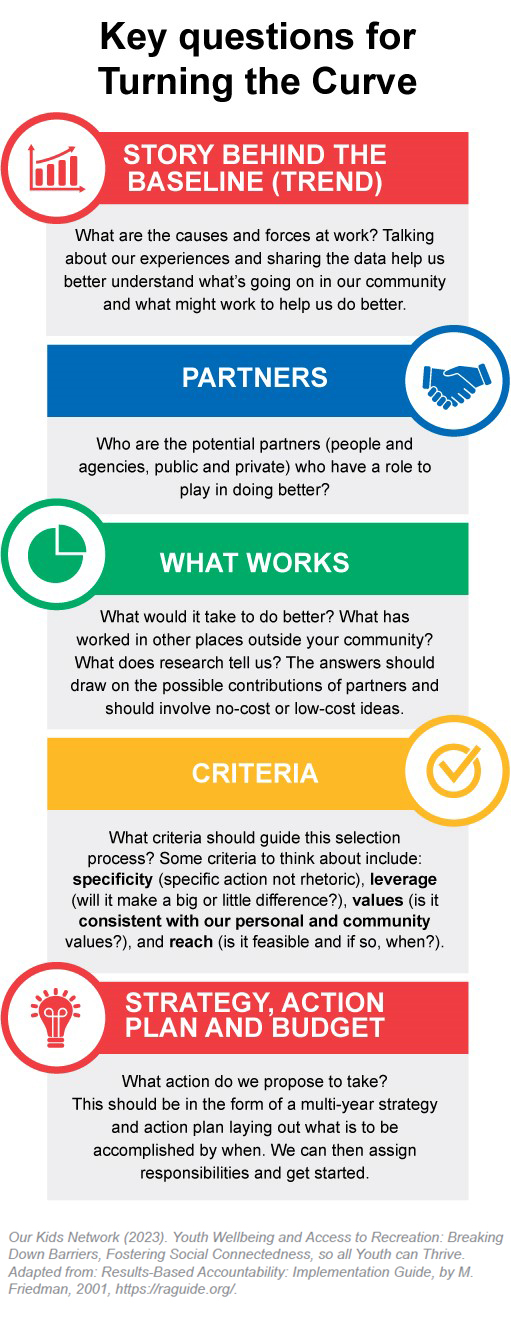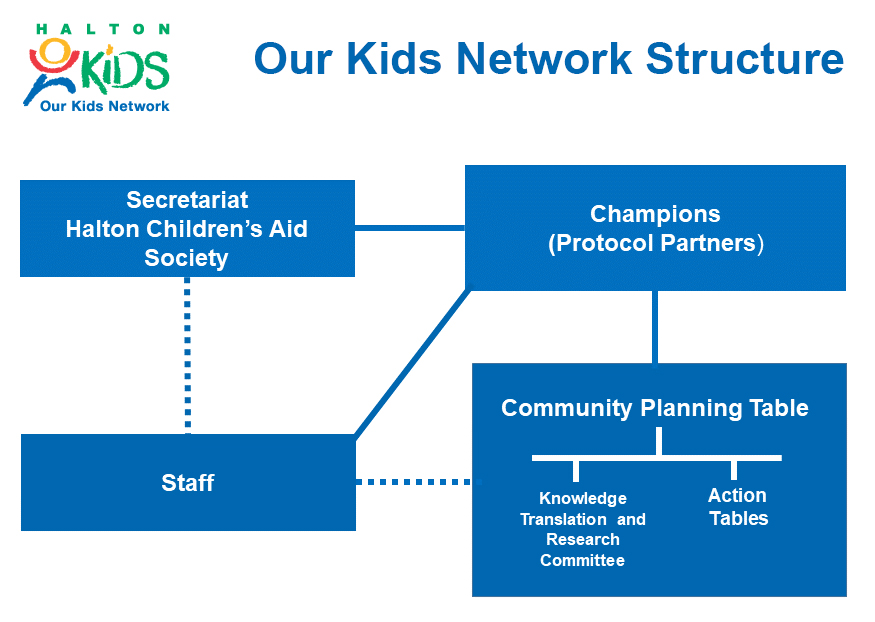Turning The Curve
Halton Youth Impact Survey Results
Are recreation and leisure opportunities accessible to all children and youth in Halton?

Findings reflect the responses of 1915 youth in the 13 to 18 age range.
Recommendations For Action
This is referred to as “turning the curve”. In other words, you want to take action on indicators that reflect a negative trend in order to turn the trend or curve in a more positive direction. The following is an easy tool designed by Mark Friedman, developer of Results Based Accountability (www.raguide.org), that can move you from talk to action in 45 to 60 minutes. We suggest you use this tool as a way to discuss the results in this bulletin and the detailed data available online at www.ourkidsnetwork.ca.
As you take the steps to move the data into action, consider reflecting on what we still need to understand.
- Is something missing from these key findings?
- Has your organization identified an area that should be explored further?
- How can we work together to address these knowledge gaps?
Limitations
- This bulletin covers only responses of youth in the 13-18 age range.
- Open invitation sampling strategy (non-probabilistic).
- Sample is not necessarily representative of all children and youth living in Halton.
- It is not possible to determine a response rate.
- However, considering the geographic coverage and the size of the final sample, it’s fair to assume that we have a reasonably good cross-section of children and youth living in Halton.
- A higher degree of diversity within this sample calls for caution when interpreting overall ratios. For more details on the composition of the sample see the sociodemographic table.
- The data are meant to provide a snapshot of youth wellbeing during COVID, and caution should be used when comparing across time.
- While each indicator is important, using multiple indicators as evidence of strengths and needs provides a more comprehensive representation.
- This is a self-report survey and several types of response bias have been identified related to self-report surveys. Use caution when interpreting the findings.









